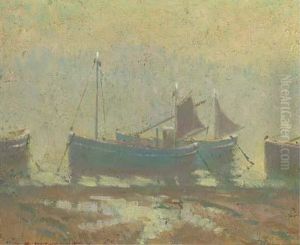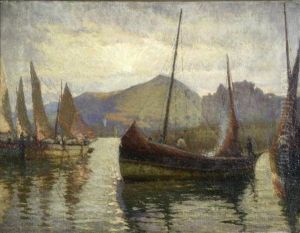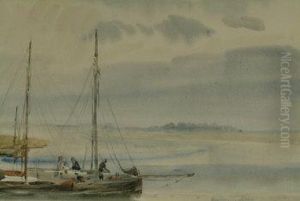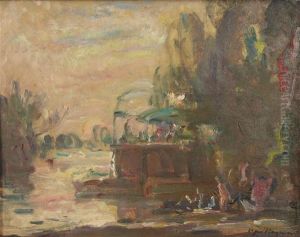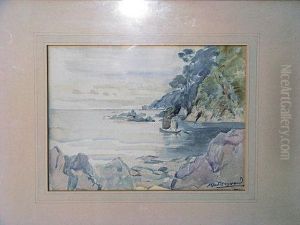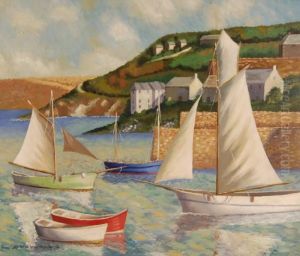Alfred Hayward Paintings
Alfred Hayward was a British painter and watercolourist born in 1854, whose work spanned the late Victorian era into the early 20th century. Though not as widely recognized as some of his contemporaries, Hayward made significant contributions to the British art scene, particularly in the realm of landscape and maritime painting. His artistic journey reflects the broader transitions in British art from the detailed, almost photographic precision of the Victorian period to a freer, more impressionistic approach that gained popularity as the new century progressed. Hayward's early work was marked by a meticulous attention to detail, often focusing on the bustling life of British ports and the serene beauty of the English countryside. As he matured as an artist, his style evolved, showing influences of Impressionism, which was revolutionizing the art world at the time. This shift is evident in his later works, where there is a noticeable softening of edges and a more vibrant use of color, capturing the fleeting effects of light and atmosphere. Despite this evolution, Hayward remained fundamentally dedicated to depicting the reality of his subjects, whether it was a calm coastal scene or the dynamic energy of a working harbor. Throughout his career, Hayward exhibited at various prestigious venues, including the Royal Academy and the Royal Society of British Artists, both of which were pivotal platforms for artists in the UK. His works were well-received, praised for their technical skill and emotive qualities, though he never achieved the level of fame as some of his peers. Today, Alfred Hayward's paintings can be found in private collections and occasionally in British galleries, serving as a testament to his skill and the transitions in British art during his lifetime. He passed away in 1939, leaving behind a body of work that continues to be appreciated by those who discover it, offering a glimpse into the changing landscapes and seascapes of Britain from the 19th to the 20th century.
